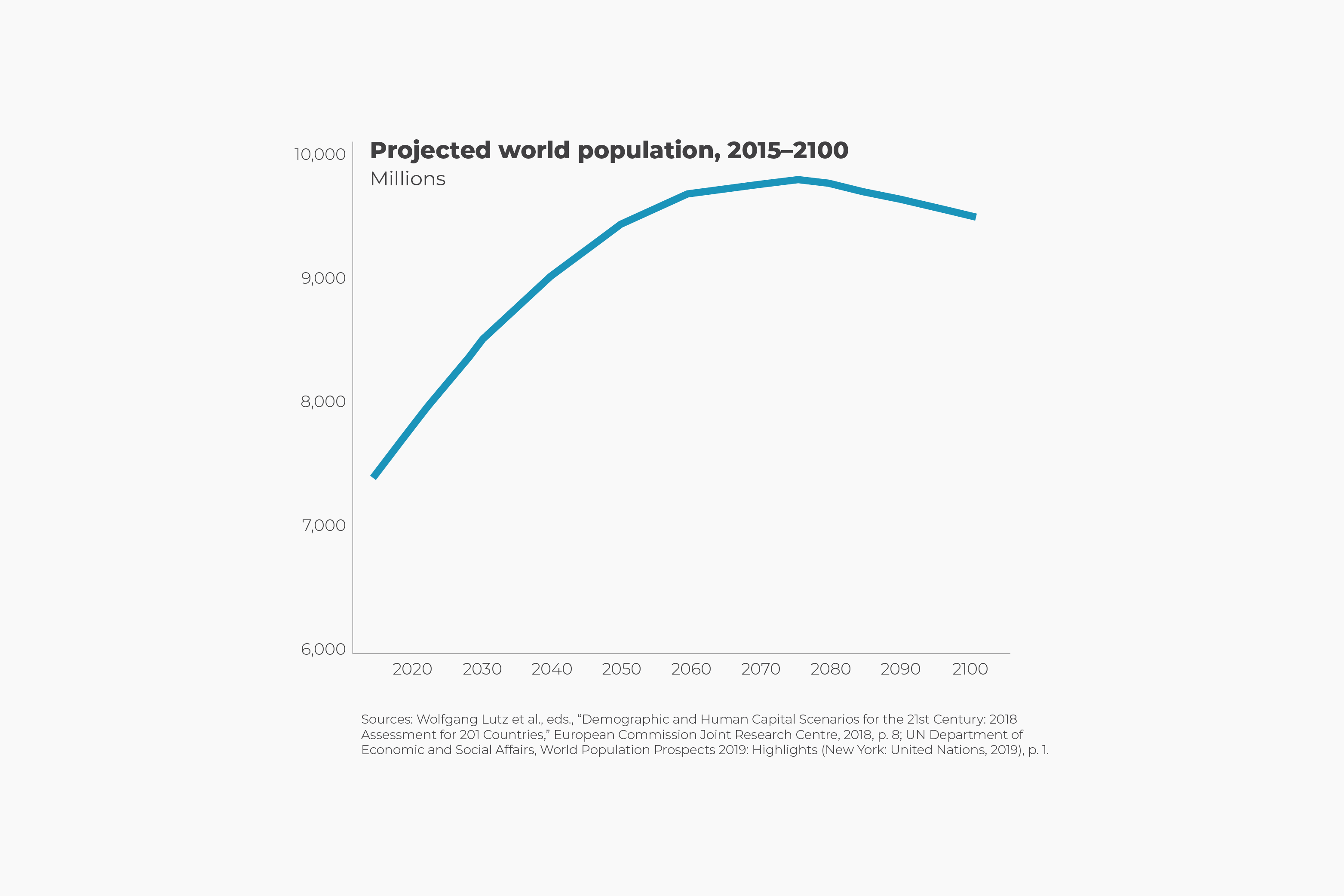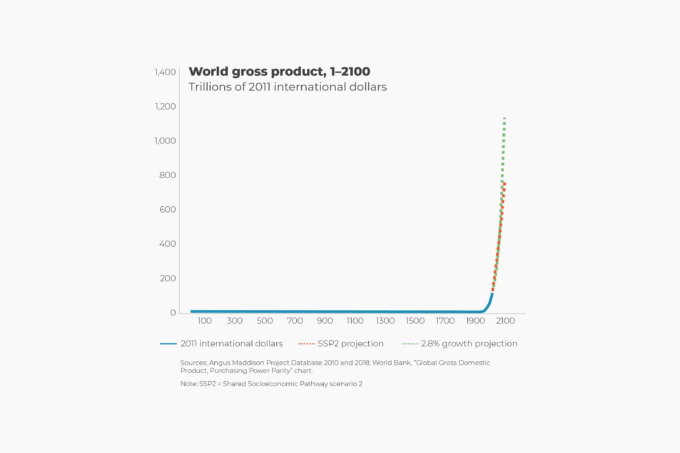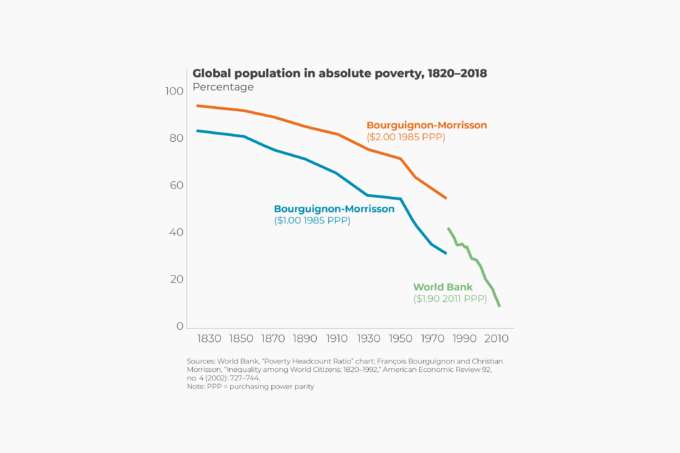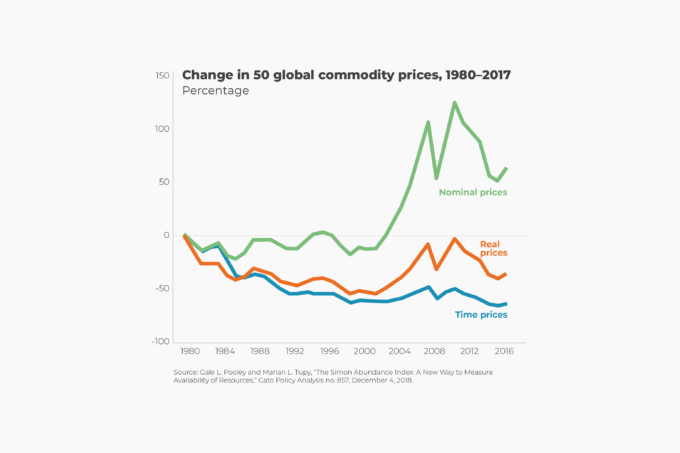World population will likely peak at 9.8 billion people at around 2080 and fall to 9.5 billion by 2100 in the medium-fertility scenario calculated by demographer Wolfgang Lutz and his colleagues at the International Institute for Applied Systems Analysis. Alternatively, assuming rapid economic growth, technological advancement, and rising levels of educational attainment for both sexes—all factors that tend to lower fertility—Lutz projects that world population will more likely peak at about 8.9 billion by 2060 and decline to 7.8 billion by the end of the 21st century. Today, global population stands at about 7.7 billion.
These projections contrast with the United Nations’ median population projection, which reckons that there is a good chance that the world population will peak at 10.9 billion before 2100. Lutz and his fellow researchers point out that past UN projections have been too high. That has been the case, they argue, because the UN does not take adequate account of the effects on fertility of increased levels of education, especially the schooling of girls and women.
Other global trends—such as steeply falling child mortality rates, increased urbanization, rising incomes, and the spread of political and economic freedom—all strongly correlate with families’ choosing to have fewer children. Instead of having many children in the hope that a few might survive, more parents around the world now aim at providing those few whom they do have with the skills and social capital that will enable them to flourish in a modern economy. The trend toward lower population growth is good news because it means that the global expansion of reproductive freedom is empowering more families to decide how many children they wish to have.








